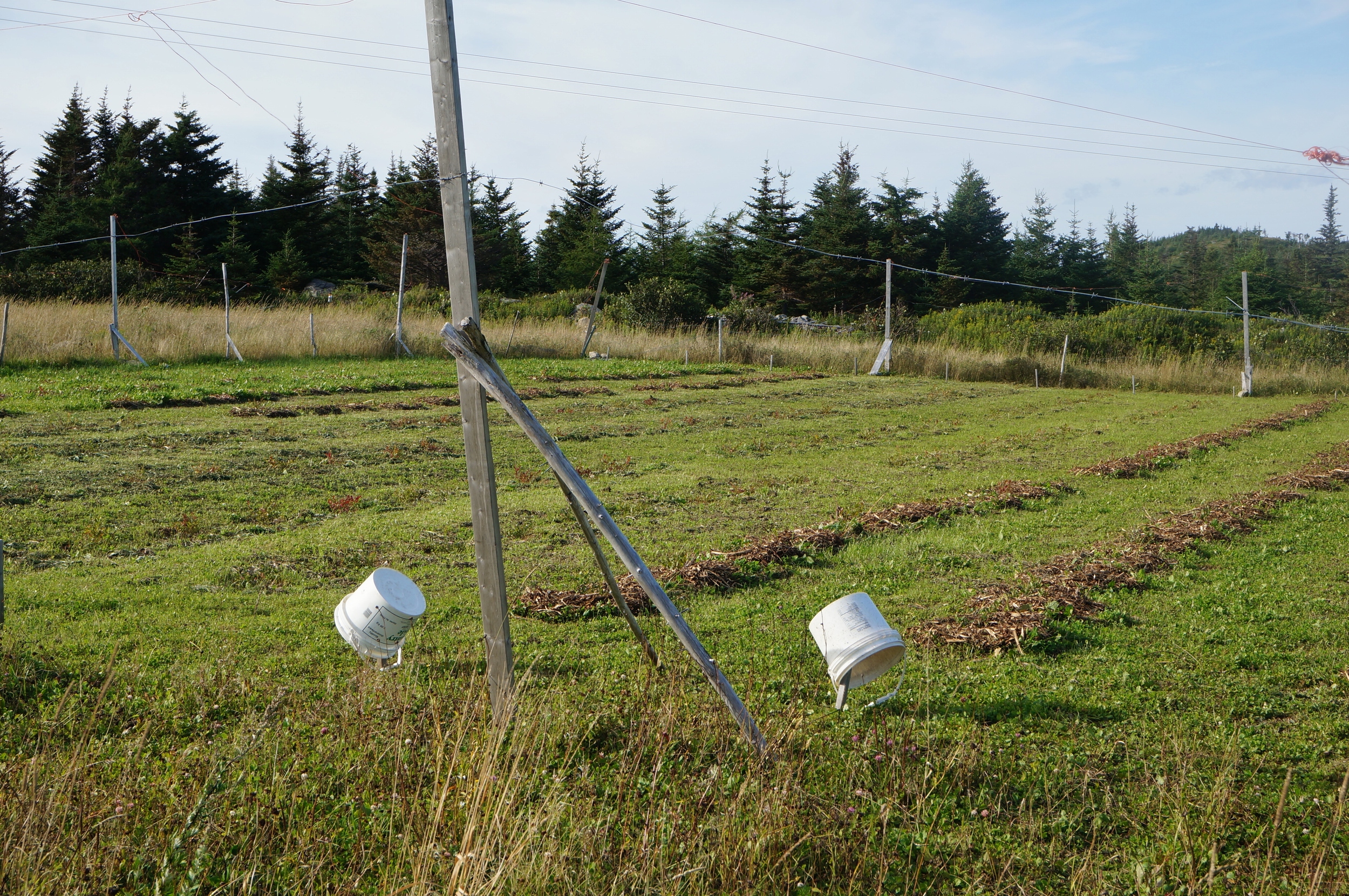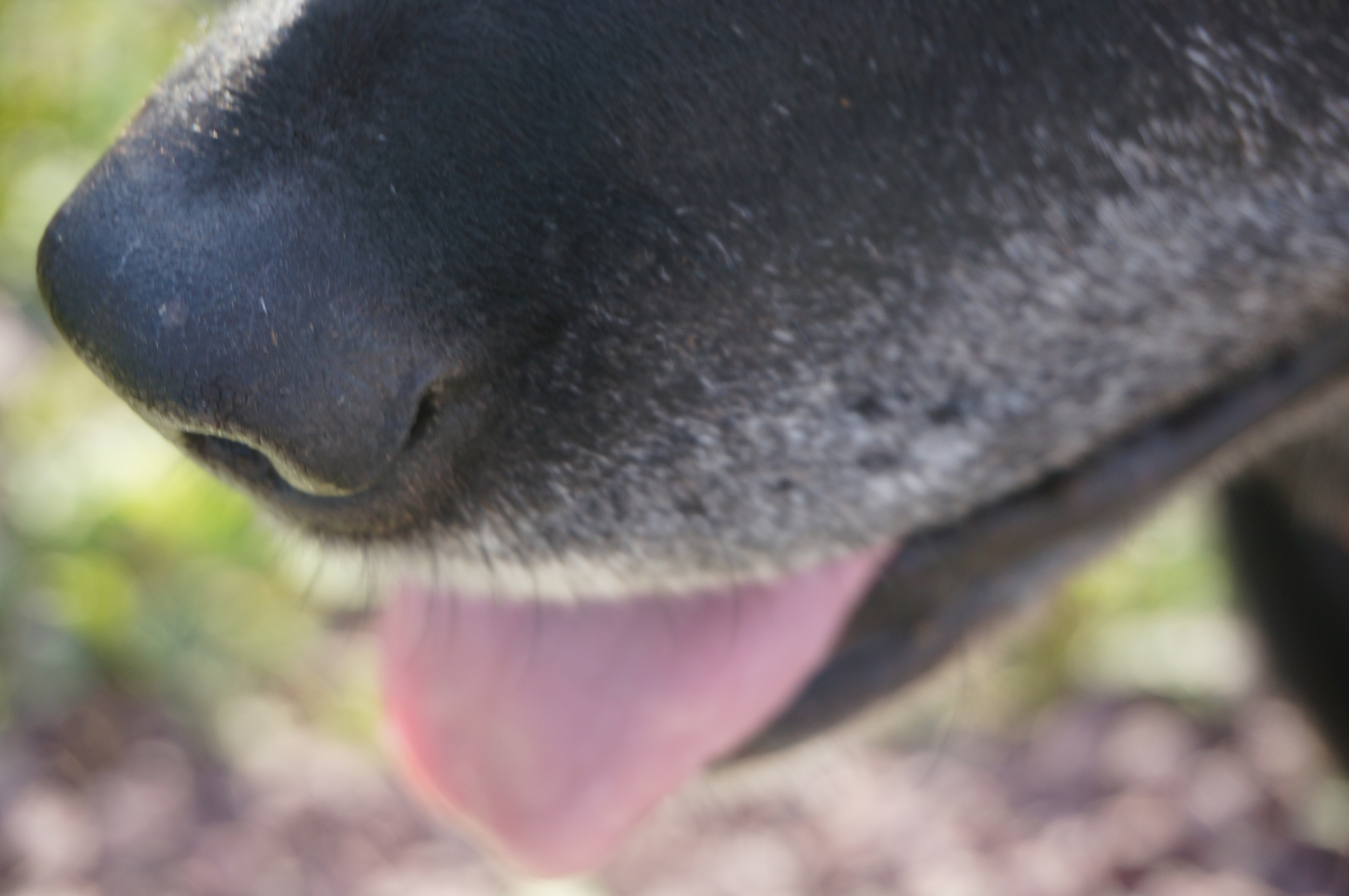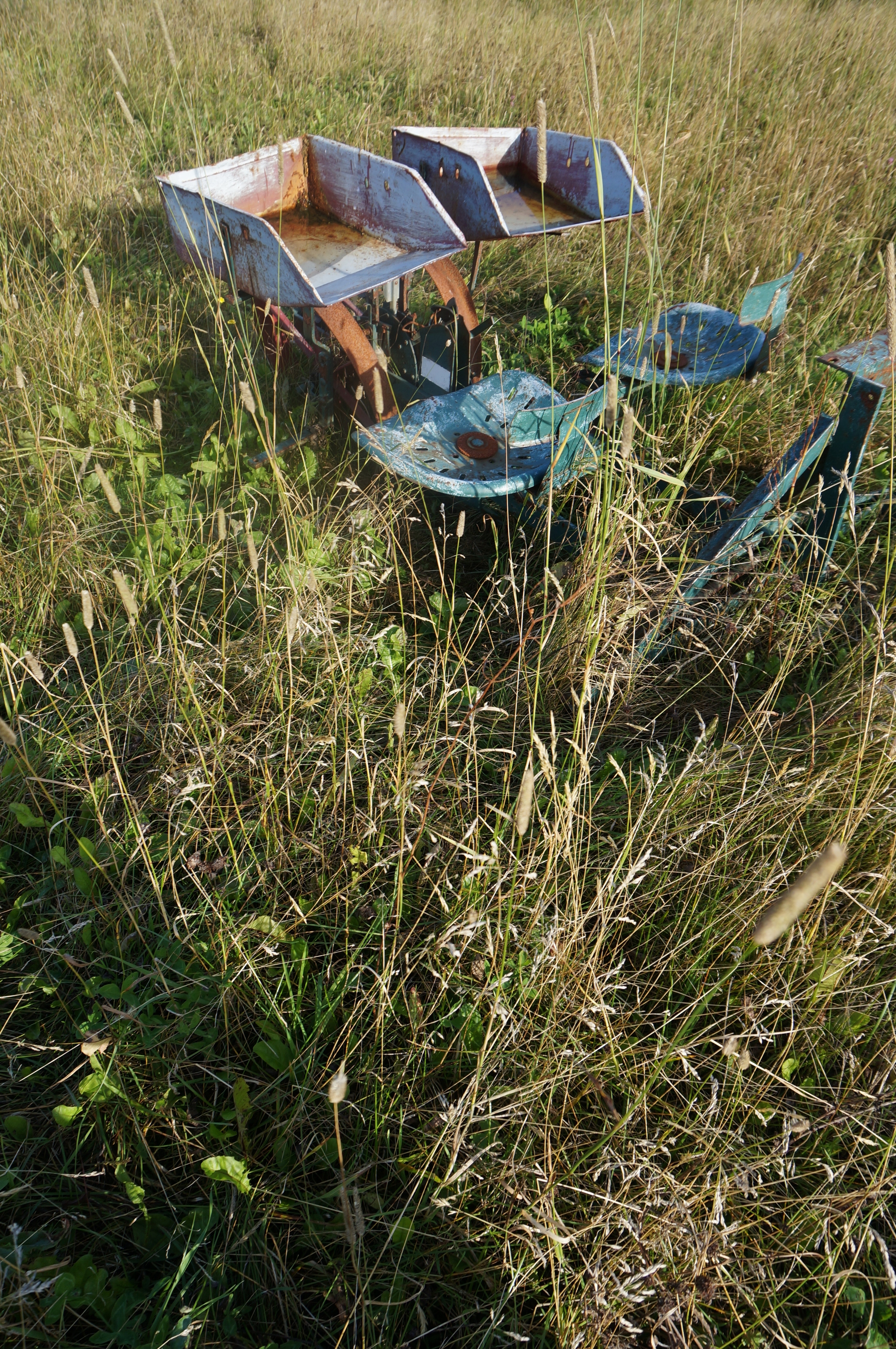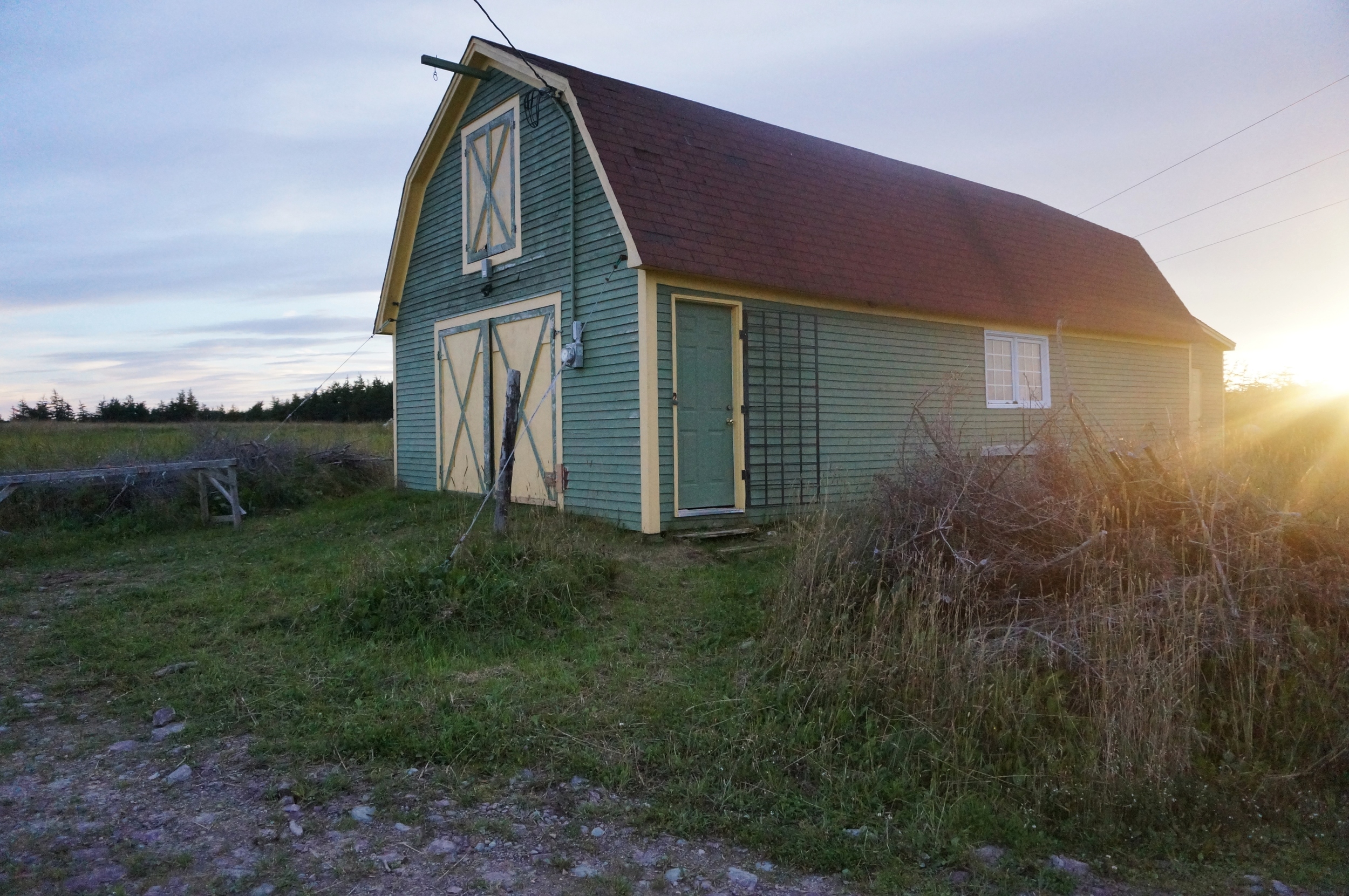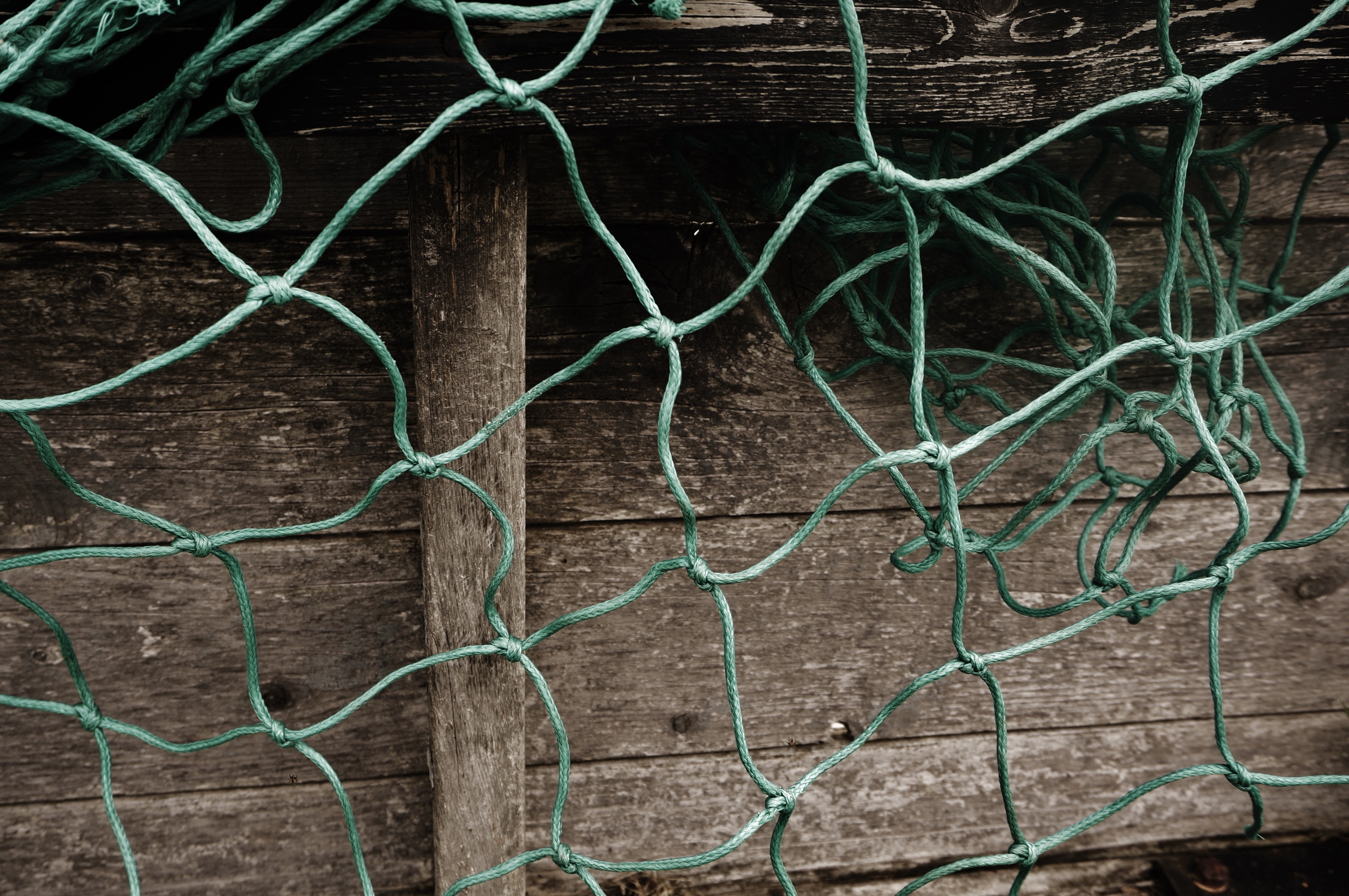These two new farmers have been operating Roots Country Farm near Bay Roberts for two seasons now.
A Conversation with Terry Dobbie and Donna Bishop of GrowDat Farms
Terry Dobbie farms up (way up!) on a hill outside Heart's Content, overlooking Southern Cove Pond. The fifty-five acres of land that he leases were at one time Reginald Legge's, before being used as an experimental farm by the Lower Trinity South Regional Development Association. Terry, along with his aunt Donna Bishop, have been working the land for the past six years. Terry grew up in Ontario, and studied to be an engineer. Newfoundland is someplace he knew would be home without ever having set foot in it. He knew, too, he wanted to farm, so he moved out to Newfoundland, and found the land that became GrowDat. Donna, after twenty years living away, came back to her native Cavendish, where she and Terry now both live.
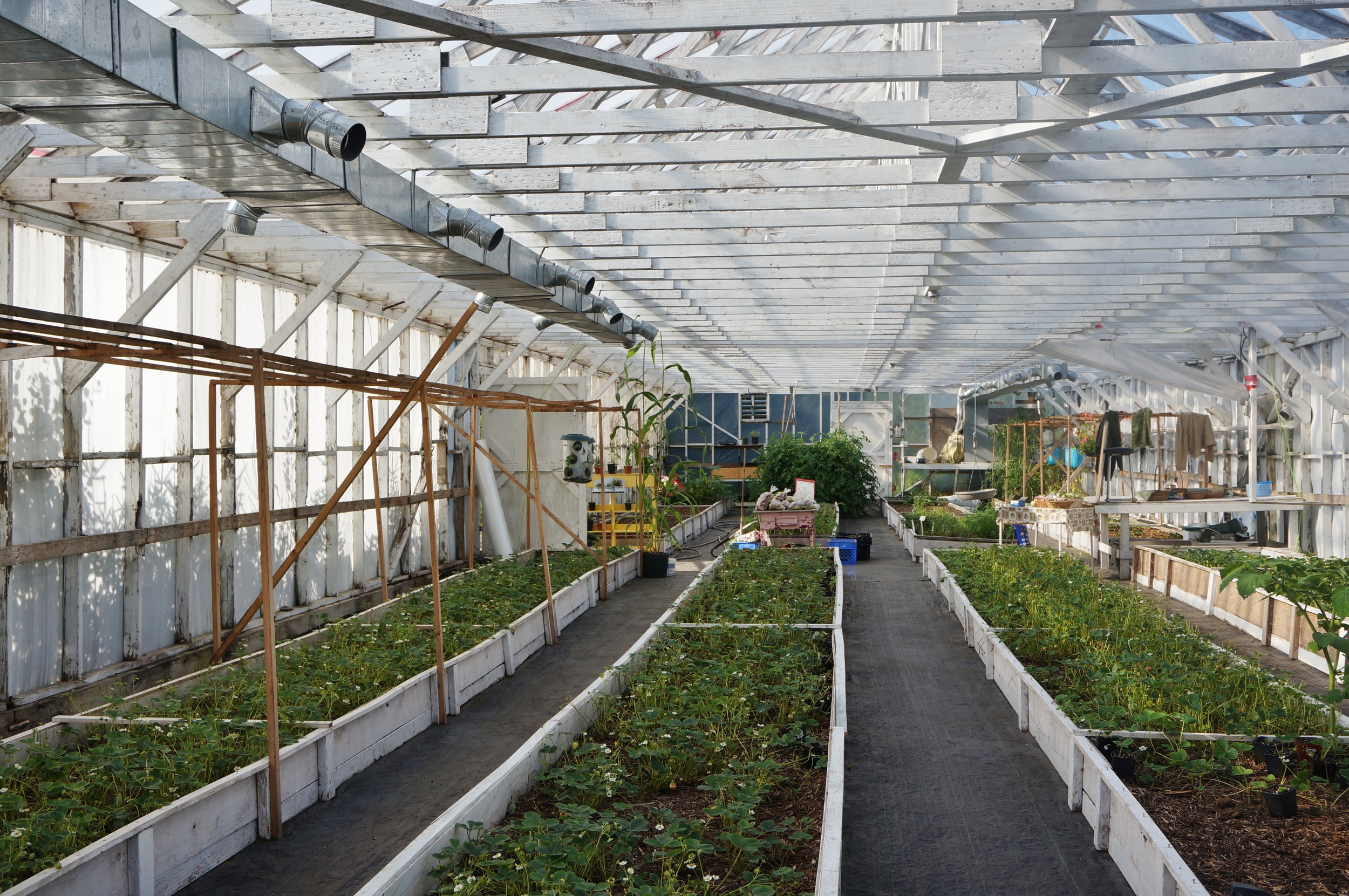 Strawberries cut back in the greenhouse.
Strawberries cut back in the greenhouse.
The land that Growdat is on is beautiful. Fences are made from rough cut trees, askew, and the main barn, the chicken coop and the farmstand are recently painted in yellow and green. Walking up through the fields, you can turn around and look back on the pond, a huge expanse of water surrounded by trees. Or you can look right at a vast expanse of sky and field. As the sun set, the day I dropped by, it illuminated everything in a sort of golden light, falling across sheaves of grass, and shooting out from behind the barn.
Terry started the farm without a background in agriculture and he's been learning as he goes. Donna has experience working with horticultural products, which she and Terry grow in the greenhouses, along with warm-weather plants like strawberries, tomatoes, peppers and watermelons (!). Terry also grows field crops up the hill – cabbages, zucchinis, carrots, potatoes, as well as having a field of experimental blueberries – English high-bush. Donna and Terry both take care of a flock of about thirty-odd laying hens who roam free during the day and stay in the coop at night – they're pretty nosy and will try to eat anything resembling food out of your hand. Donna shows me how they have some of the birds – the original flock – trained to sit as you walk behind them. It's a leftover habit from the days when they didn't have a coop of their own and would be carried up to the barn every night.
 The inside of one greenhouse; plants abound.
The inside of one greenhouse; plants abound.
Terry tells me it hasn't always been easy, that it's still not easy - it's a pretty isolated place to be growing food, the learning curve is steep, and support from the government in terms of extension programs has not always been there. But it'd be hard to say that Terry, and Donna, haven't got a good thing going. They've got a good piece of land, good infrastructure from farms before, and good farming spirit - generosity, good humour, and kindness abound. I really enjoyed meeting Terry and Donna, and the time I spent at GrowDat.
There's a whole lotta wind up on that hill so the recordings of my conversation with Terry aren't the best. In lieu, some short excerpts are transcribed below. Take a read, if you like.
You can find GrowDat's food and horticultural products at the farm, 2km south of Heart's Content, between Heart's Content and Heart's Desire, on Route 80. For 2014, their farmstand hours are from Friday to Sunday, 10am to 6pm. You can visit their website for news, updates, photos and stories.
Rubee, farm dog extraordinaire.
"What got me started... I was living in Ontario, with my wife. [...] This always felt like home to me even though I'd never had the opportunity to live here before. So we said, let's take a break, from the rat race, [...] catch our breath, we'll build our house that we want to retire to eventually. [...] [And then] I literally bought the farm."
A mechanical transplanter.
"When you got the land, did you do any soil preparation? You got the land about six years ago, I guess." "Well, the farm was already here. It was fallow for a couple of years. But I did get a couple of loads of crab offal from a couple of the plants that were around here, and I composted them for a year, and so I've used them on this field, and pretty much all the fields. I went and got some seaweed and put [it] on there. Other than that, no, in terms of preparation." "It was pretty good in terms of preparation, because they'd been here before?" "It wasn't bad. Now, they weren't doing it organically [...] so even now you can tell that some of the fields they're just starting to come back to life."
Power lines, running overhead.
"What I've learned so far is that I have a lot more to learn. [But] [...] you have to keep the place diverse and you have to do it smart."
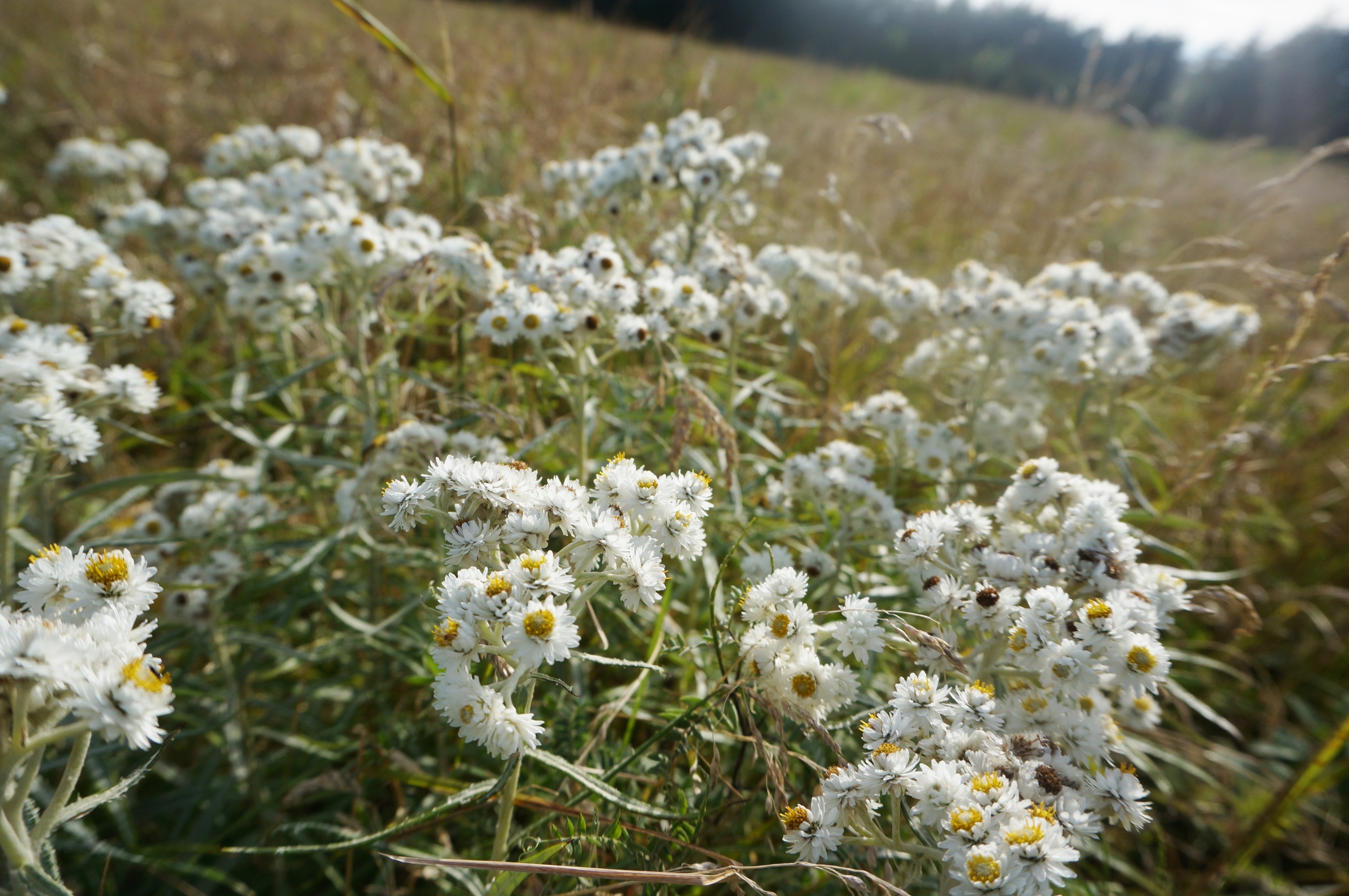 Wildflowers, up in the fields.
Wildflowers, up in the fields.
"I have nothing against [traditional agriculture] it's just I don't see that it's going to work."
Hens and chicks, down in the greenhouse.
"Our problem is labour, and trying to figure out how to [get things] to people on time."
"Those questions are still out there. [...] What are we going to eat? What are we eating? How do we sustain ourselves? [...] I think the answers are down there [in the soil] somewhere."
Thanks Terry. Thanks Donna.
Breaking New Ground : A Conversation with Jim and Michelle Lester of Lester's Farm Chalet
A Conversation with Dave and Del Oliver of Olivers Farm
This post is the seventh in a series that Sarah Campbell, an intern with FSN, is doing around the International Year of Family Farming this summer, gathering stories of family farming from around the Avalon Peninsula. Look for more stories in the coming weeks!
Del and Dave Oliver have been farming now for thirty-five years. They got their start on Thorburn Road at Dave's family's farm. They now farm on a property just west of Placentia Junction on the Western Avalon. Driving into the driveway, this is a farm that feels in use; real. Barns and outbuildings are scattered around the property. One houses turkey chicks under lights, another two lambs that Del has been nursing, another harnesses that will be used to hold cattle when they come in from the pasture. Ducks and geese, ducklings and goslings, roam about, and rabbits hop by. Wildflowers grow up left and right. Bees fly direct between them. Del is very protective of the bees – Oh, I love the bees. Don't ever do nothing to a bee where I'm to! she says, laughing. They're the future, b'y!
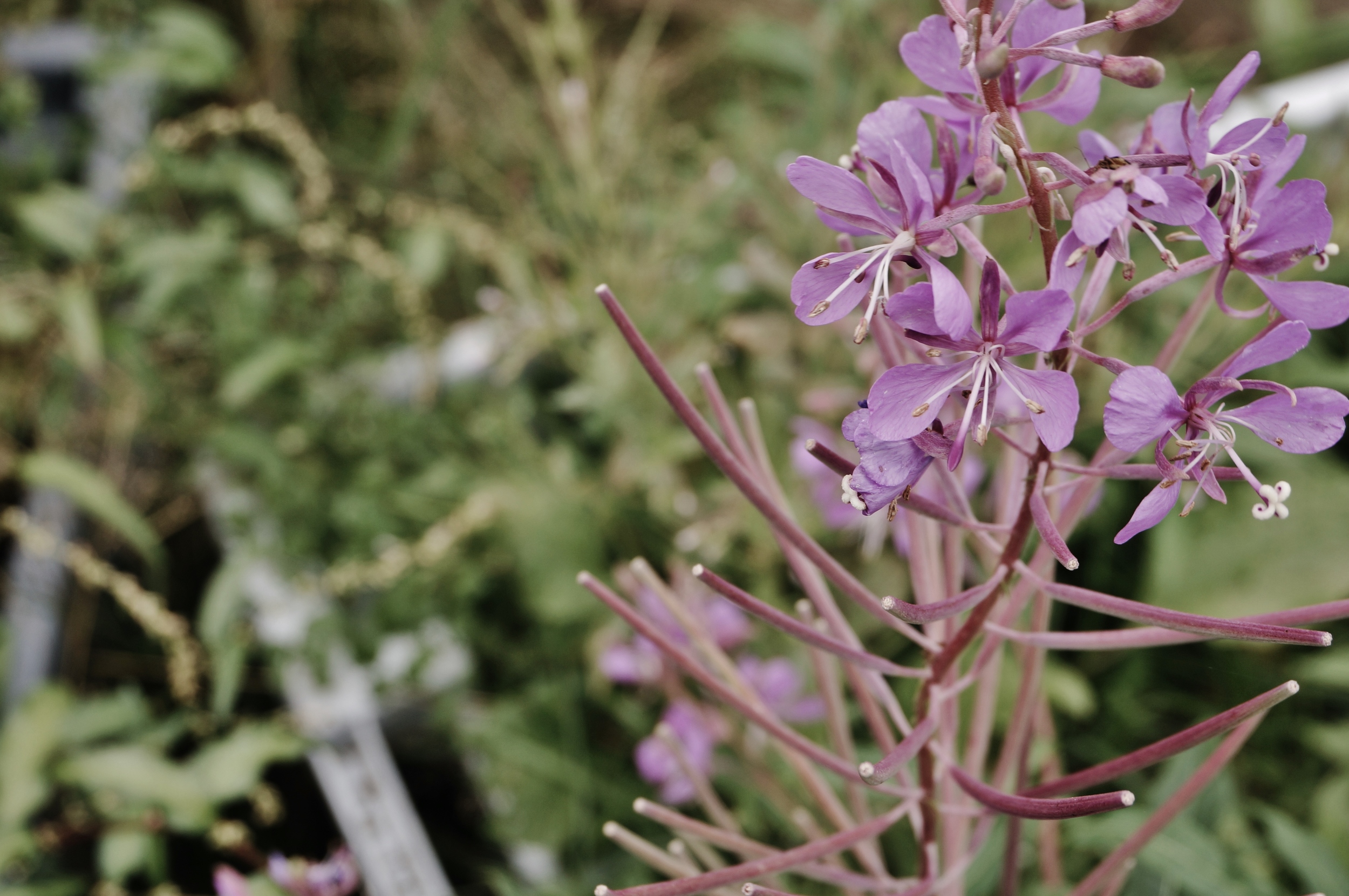

 Fireweed; Yellow wildflowers; A pink lily by the side of the house.
Fireweed; Yellow wildflowers; A pink lily by the side of the house.
Del and Dave farm animals. Turkeys, chickens, pigs, sheep, and cows. When I ask the secret to their success – the line at their truck at the farmer's market is always long – Dave says, Once they buys it once, they comes back. Dave and Del sell at the market, but also at the farm itself, and through deliveries in town. While we're talking around the kitchen table, Dave gets up to answer the door for someone who has stopped by to pick up meat. Every week they deliver meat for people who want to pick up from particular things from them. Business is good, and the market for local meat is most definitely present.
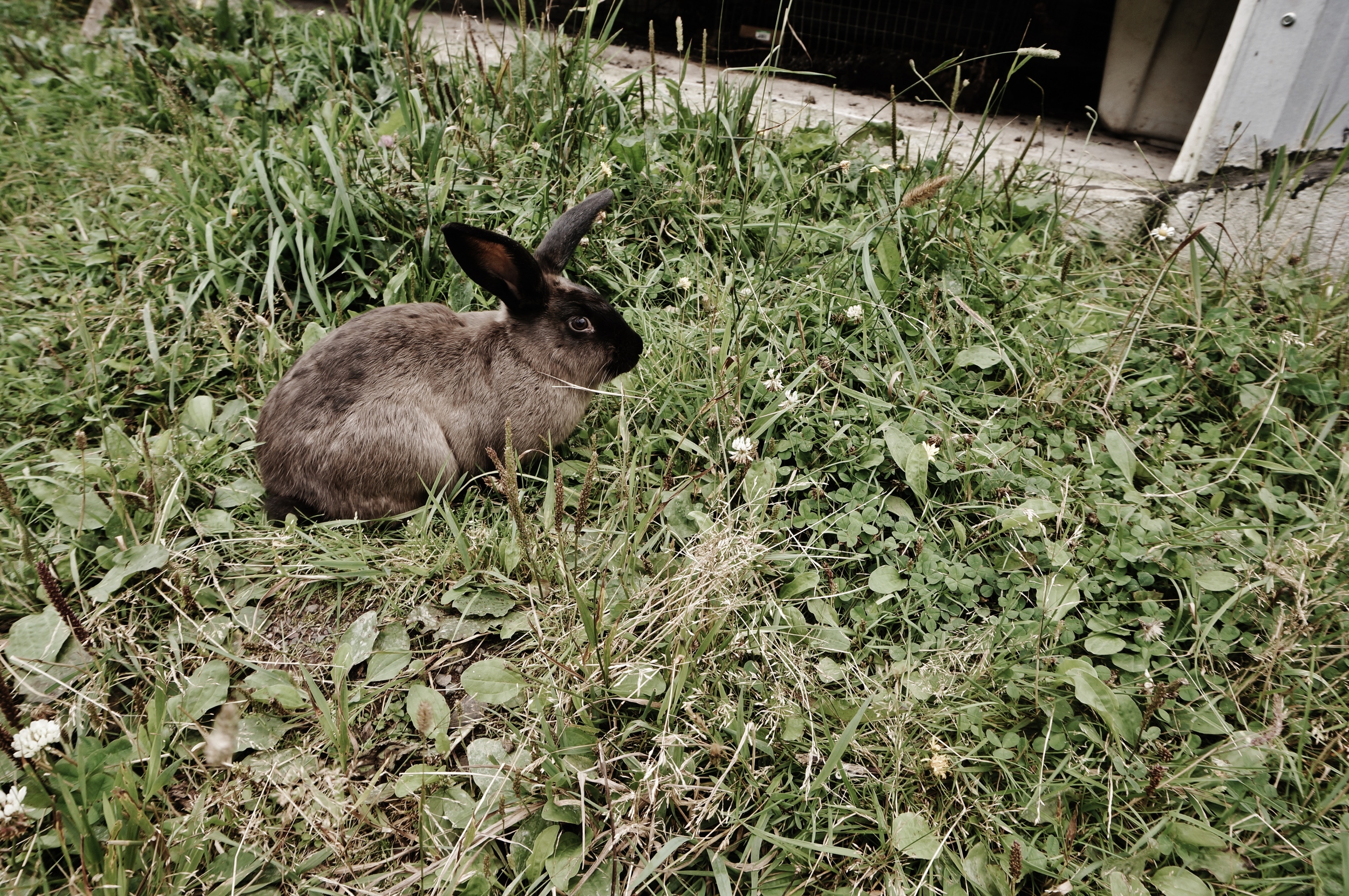
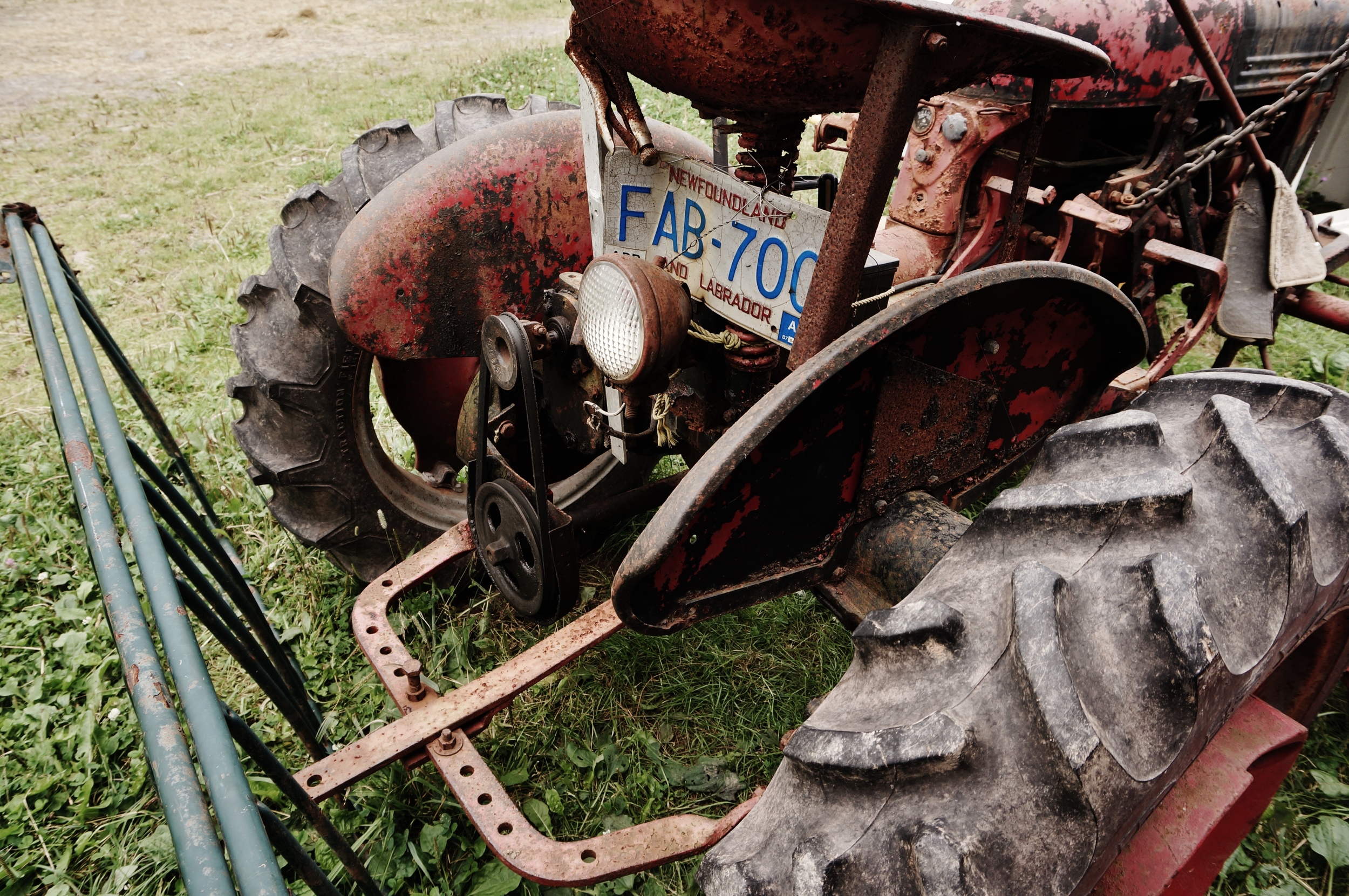
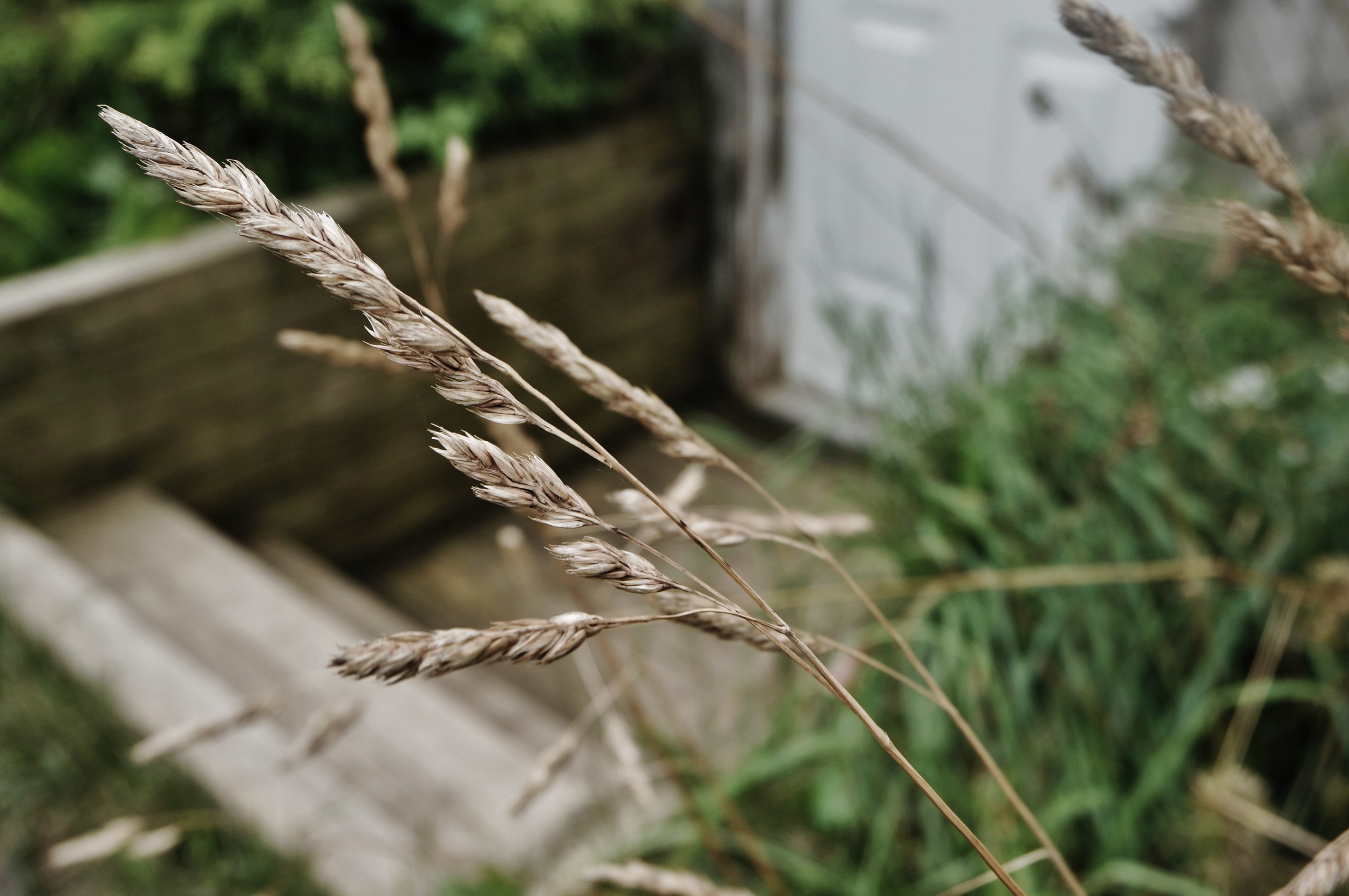
One of the rabbits; a sixty year-old tractor, still running; grass growing up beside the house.
But what becomes apparent, talking to Del and Dave, is that certain key elements of the provincial infrastructure are not in place to support growth in this market. For one, the number of slaughterhouses in the area has been steadily declining. Now there is one slaughterhouse that will process turkeys, and they do so at a premium. The facilities are simply not in place to allow for something different: where Dave and Del's meat could be processed when they need it to be, as they need it to be. Slaughterhouses may not be the most picturesque side of the agricultural business, but they are a necessity for a local meat industry.
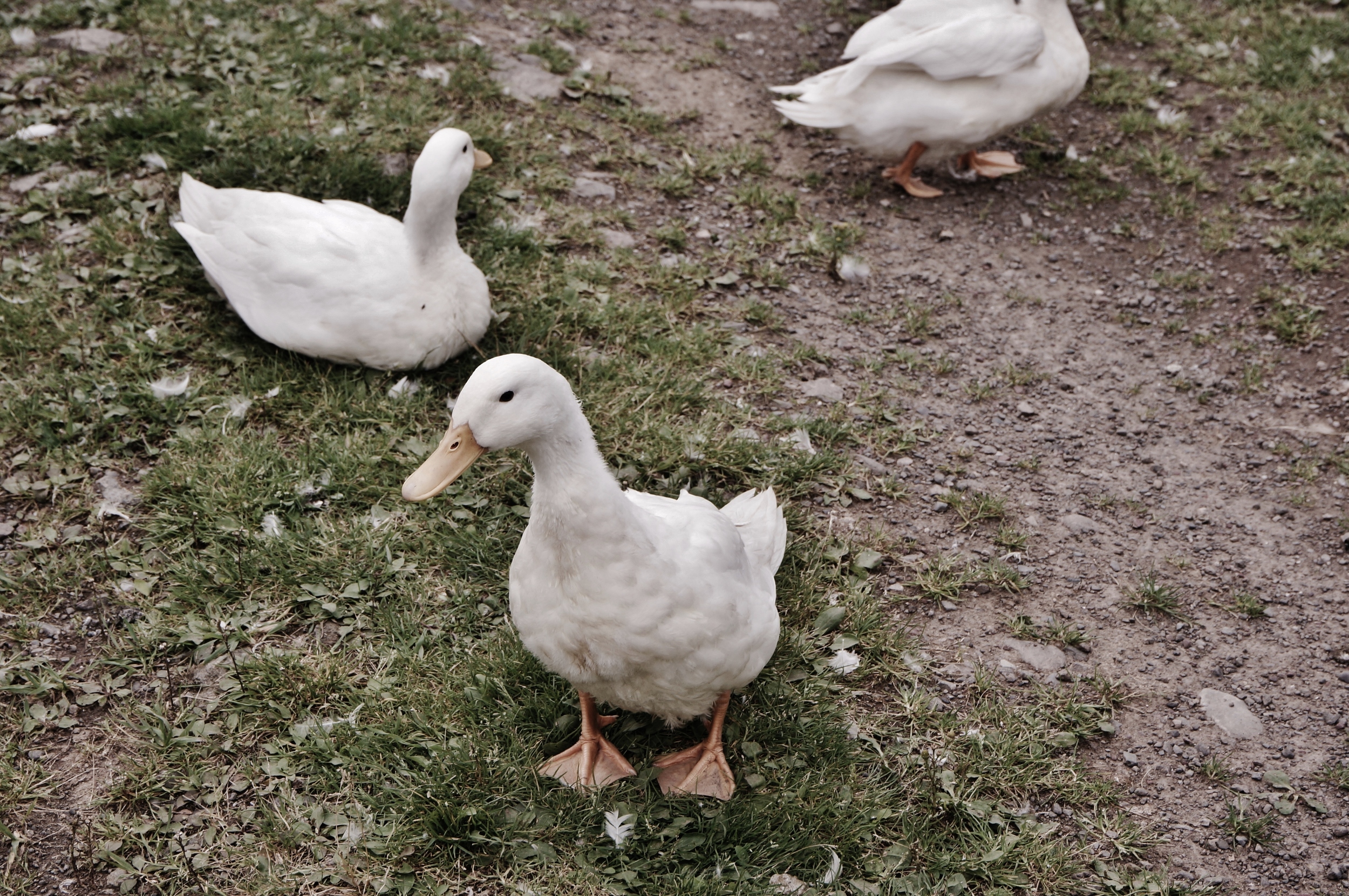
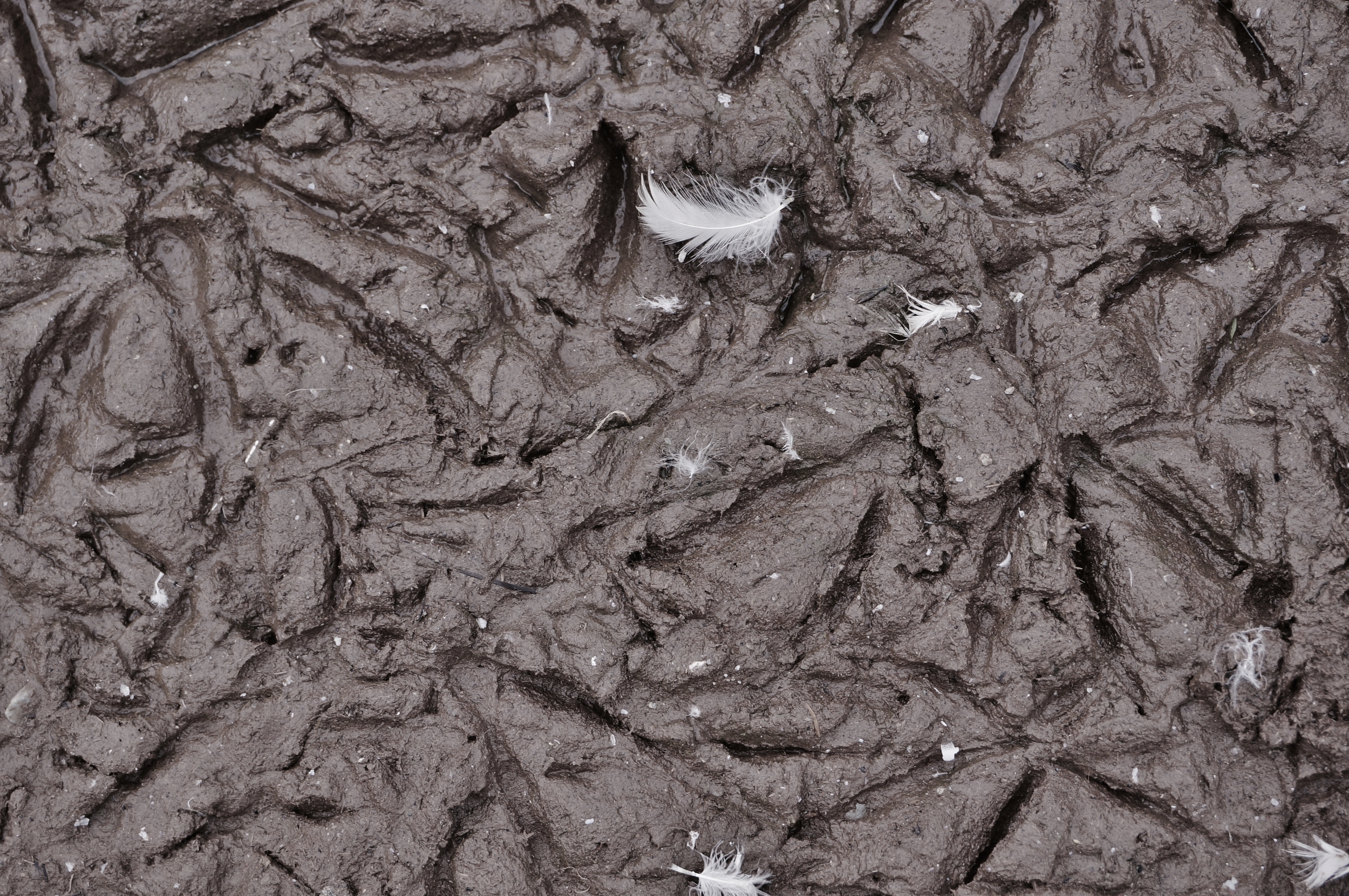
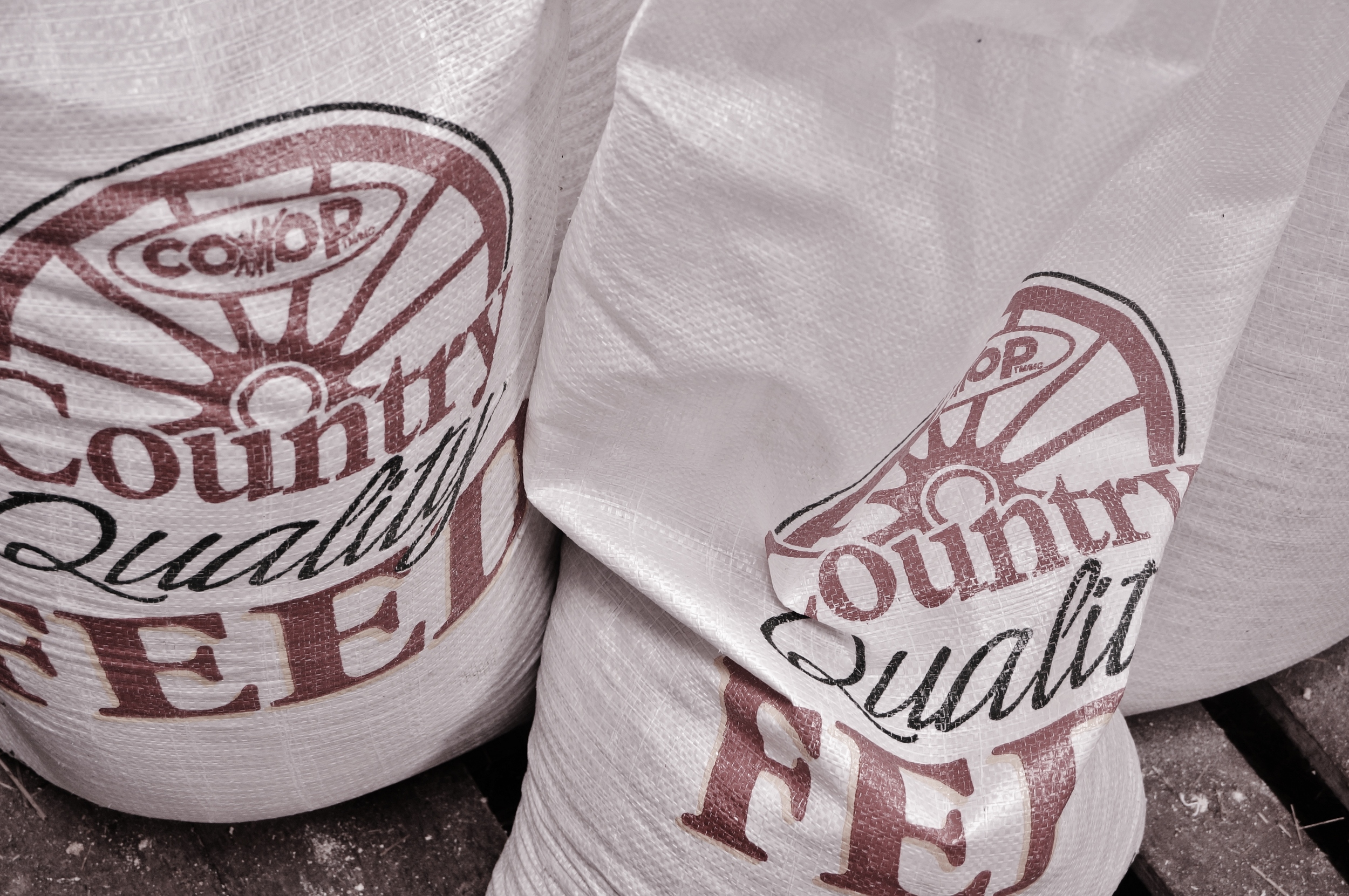
Ducks; duck footprints; feed for poultry.
Another good part of our conversation is about the system of land management in the province. I am just beginning to wrap my head around what that looks like – Crown land, agricultural lease, private land, so Del and Dave outline the basics. Agricultural lease means you can use the land, for agricultural purposes, but you can't build anything permanent on it. Because agricultural lease is often an inexpensive way of using land, it can make sense for meat farming where animals are out on pasture and need a big expanse to graze. So the farm has pasture across from the main property which is leased, and where the animals graze. There is also pasture land up by South River, which is where the cattle were when we spoke. We go back and forth on the merits of the land system – it's hard, they say, because you can't own anything outright, and you put all this money into a place, build it up and you get nothing for it. At the same time, it keeps agricultural land agricultural – it'll get passed on to farmers, instead of perhaps a relative who would sell it off for development. In the end, we leave with meat and eggs in hand, weighed out on Del's old scale from a time before. An old timer itself, but it works well. Sounds about right.
Our conversation with Del and Dave is excerpted below. Take a listen!
Dave and Del Oliver sell meat and eggs at the St. John's Farmer's Market every Saturday from June until October, 9am until 2pm. Look for the white truck. They also take orders, to be brought into town, and sell at their farm, off the Argentia Access Road at Placentia Junction. They can be reached at 687-1639.
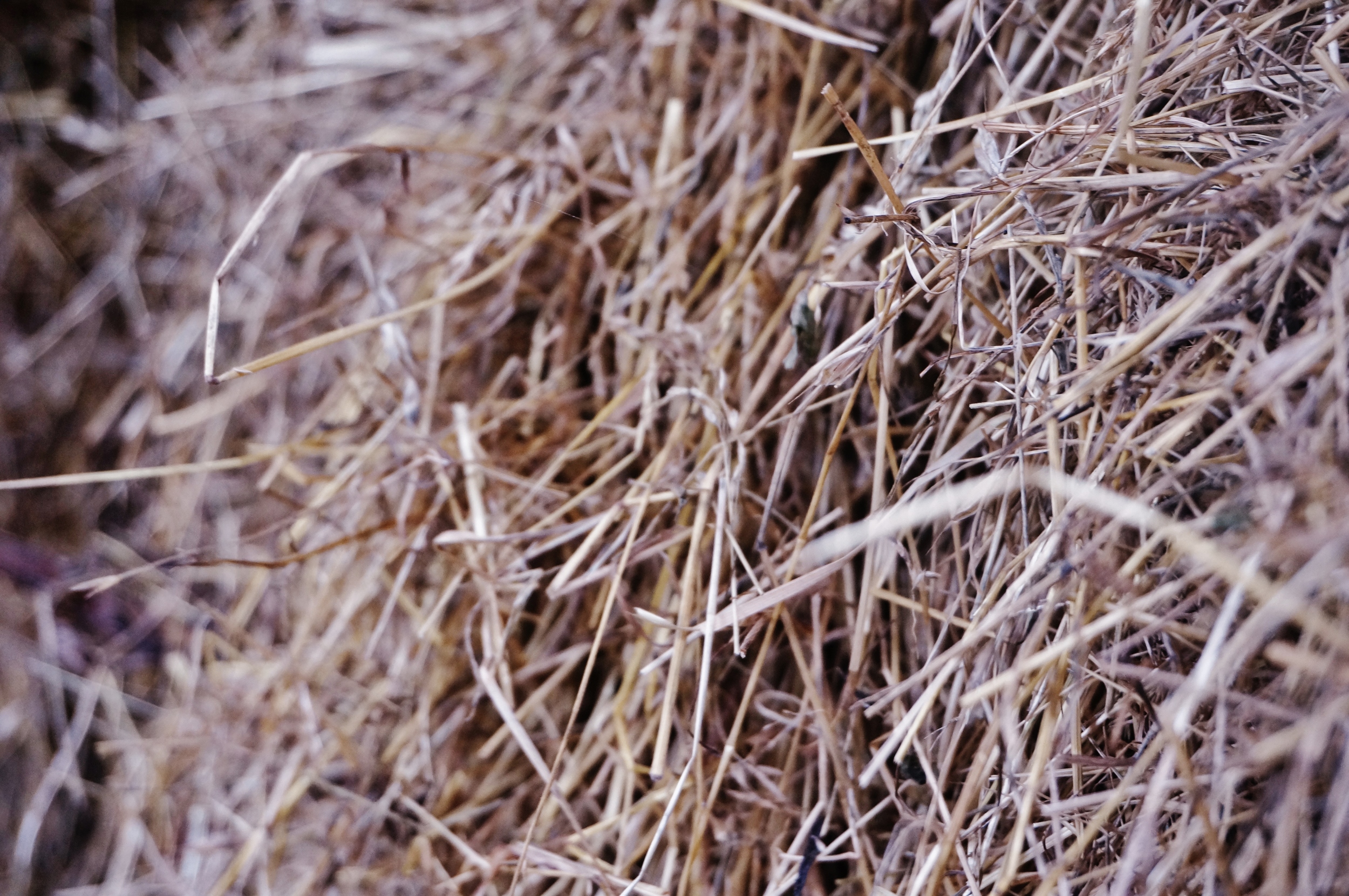
Hay laid up inside.
[audio mp3="http://rootcellarsrock.ca/wp-content/uploads/2014/09/Beginnings.mp3"][/audio]
Beginnings.
 The old scale; fencing wire on the side of the truck; the balance on the front of the scale.
The old scale; fencing wire on the side of the truck; the balance on the front of the scale.
[audio mp3="http://rootcellarsrock.ca/wp-content/uploads/2014/09/This-land.mp3"][/audio]
This land.
The main barn and hayloft.
[audio mp3="http://rootcellarsrock.ca/wp-content/uploads/2014/09/The-business-of-selling-meat.mp3"][/audio]
The business of selling meat.
Laying hens; a wild cat; turkey poults.
[audio mp3="http://rootcellarsrock.ca/wp-content/uploads/2014/09/The-provincial-food-system.mp3"][/audio]
The provincial food system.
[audio mp3="http://rootcellarsrock.ca/wp-content/uploads/2014/09/Changing-times.mp3"][/audio]
Changing times.
[audio mp3="http://rootcellarsrock.ca/wp-content/uploads/2014/09/Looking-toward-the-future.mp3"][/audio]
Looking toward the future.
Thanks Dave! Thanks Del!













